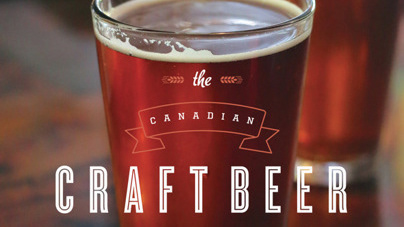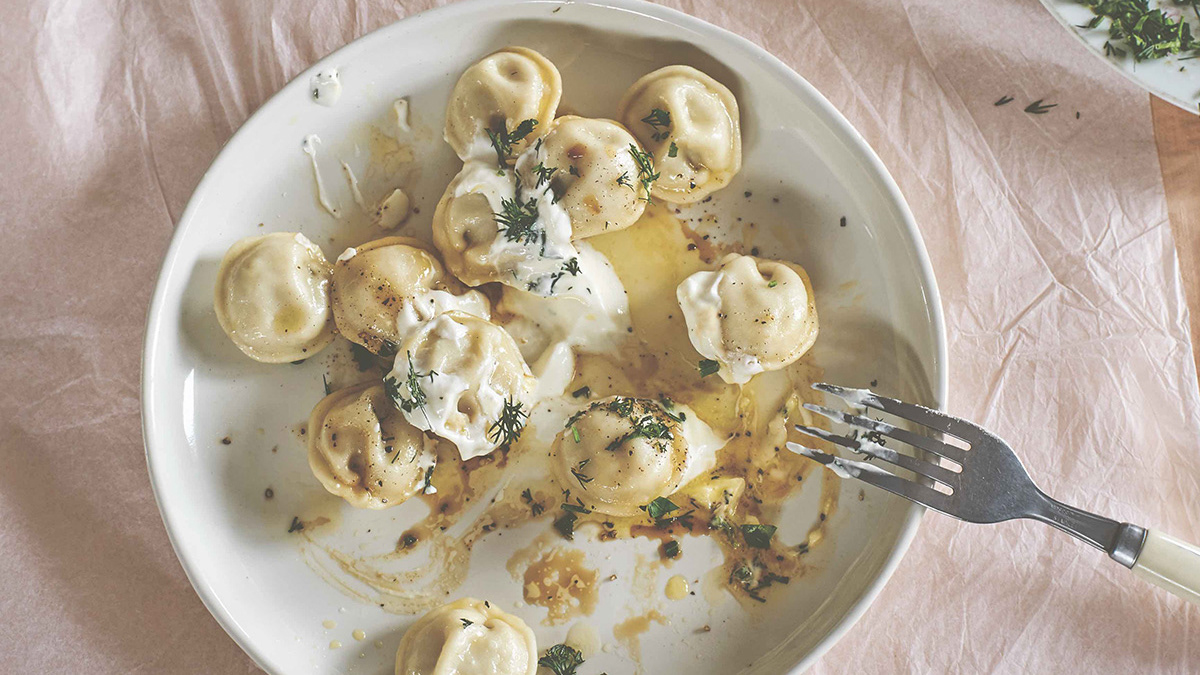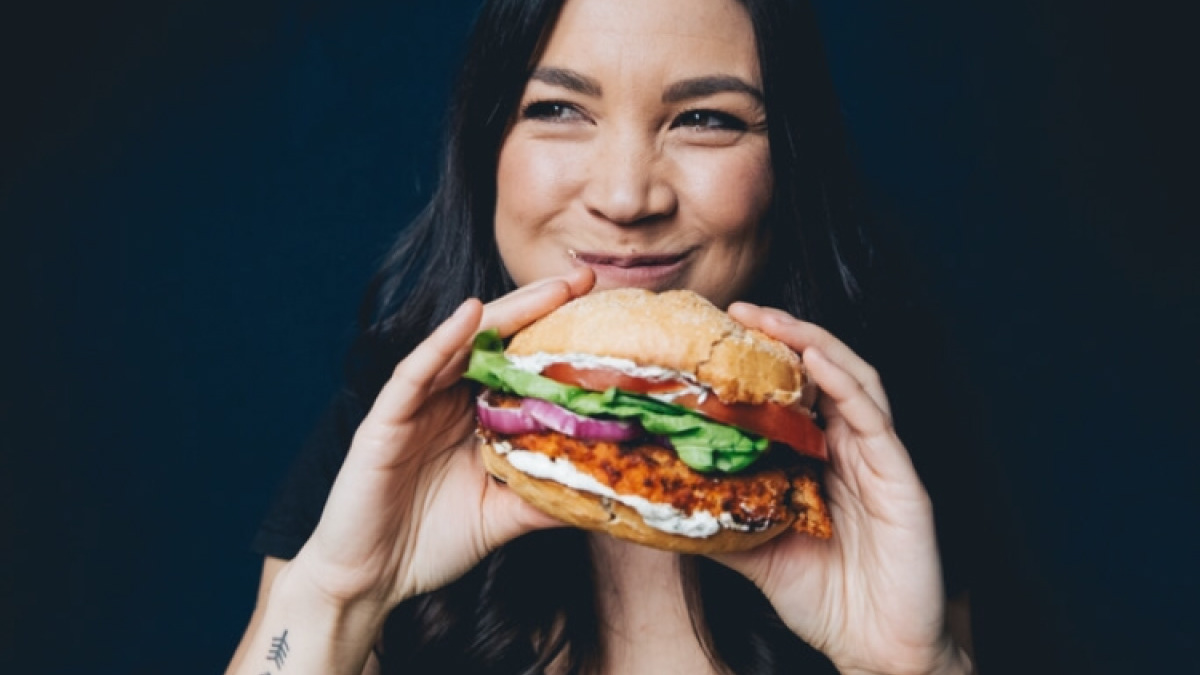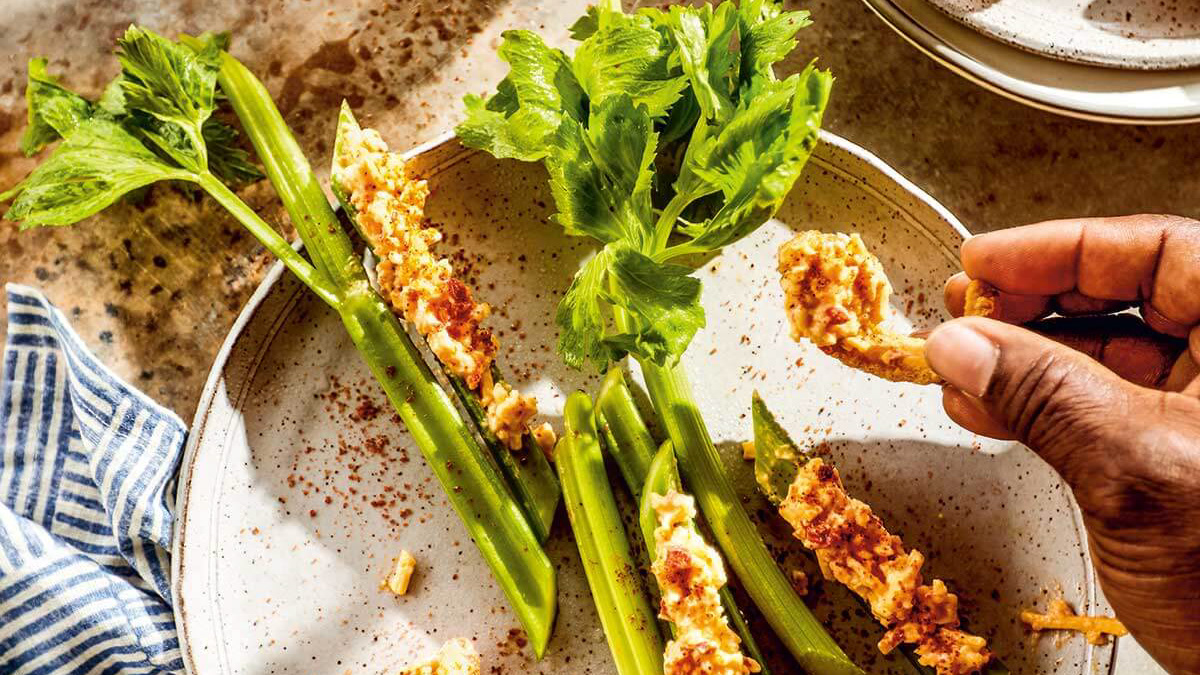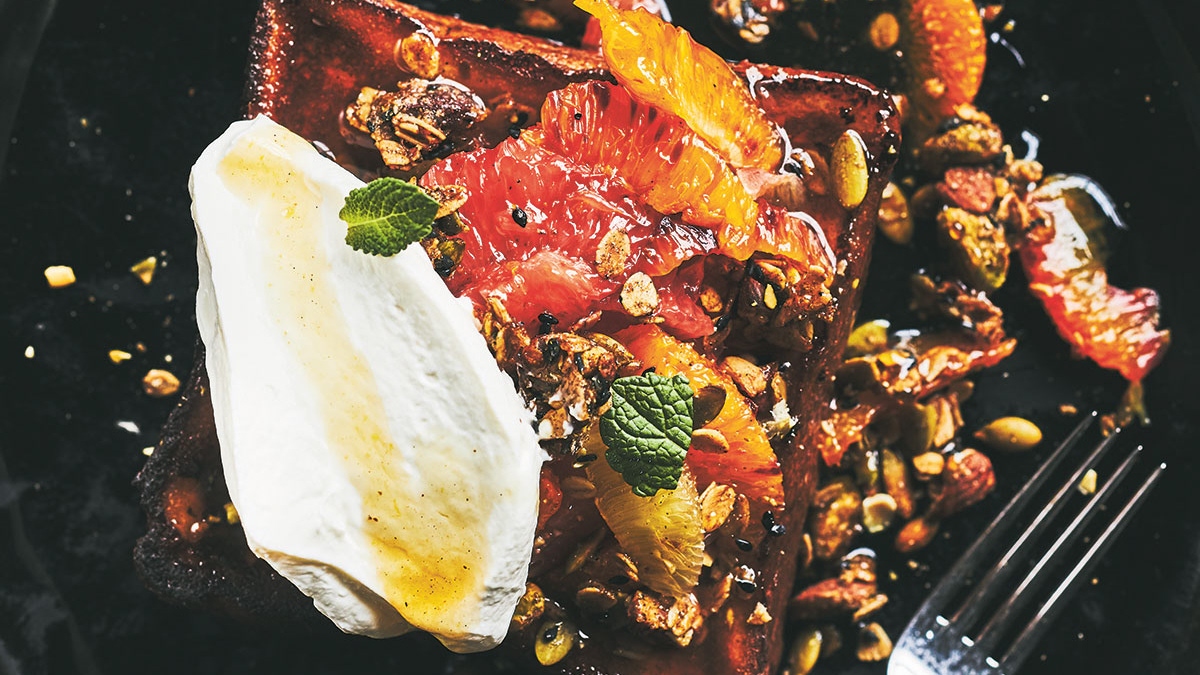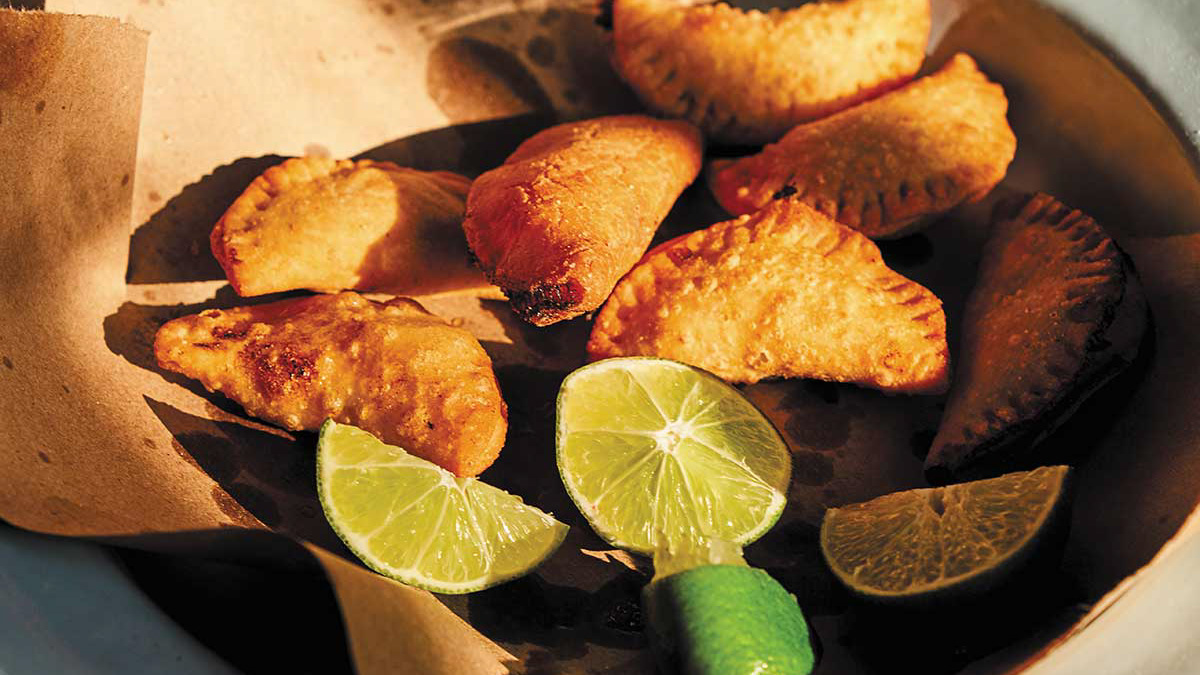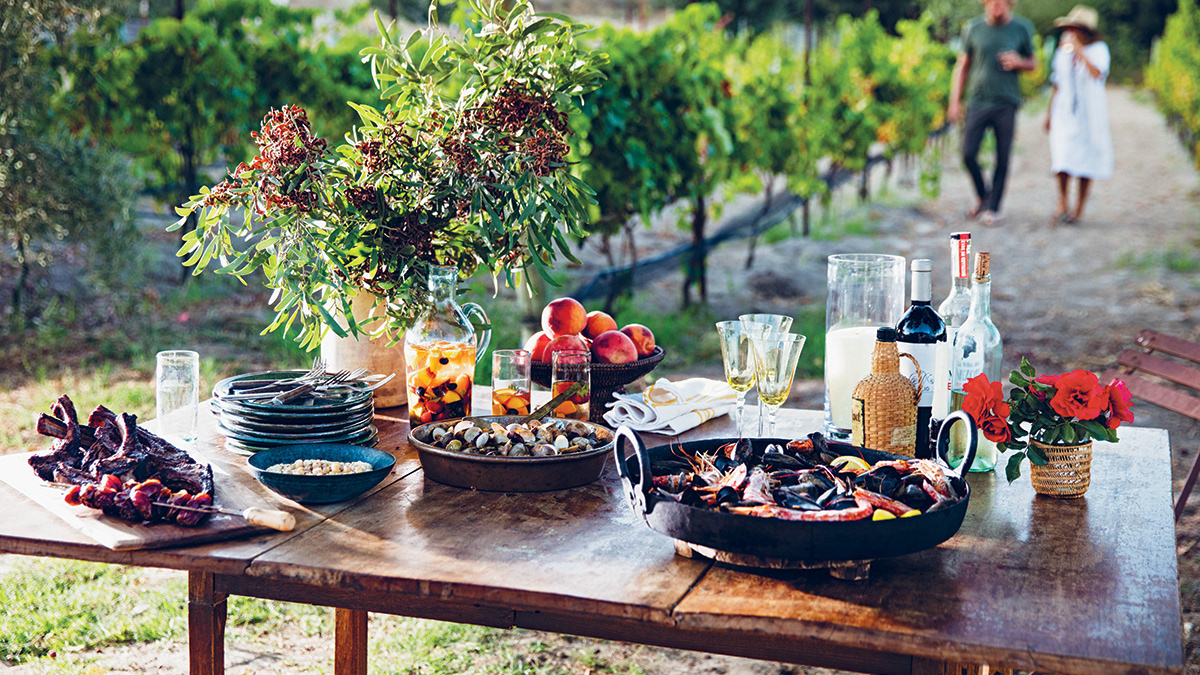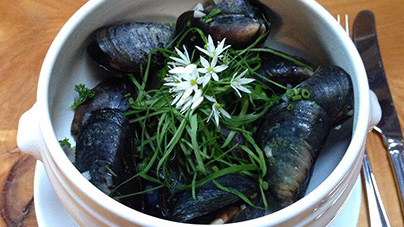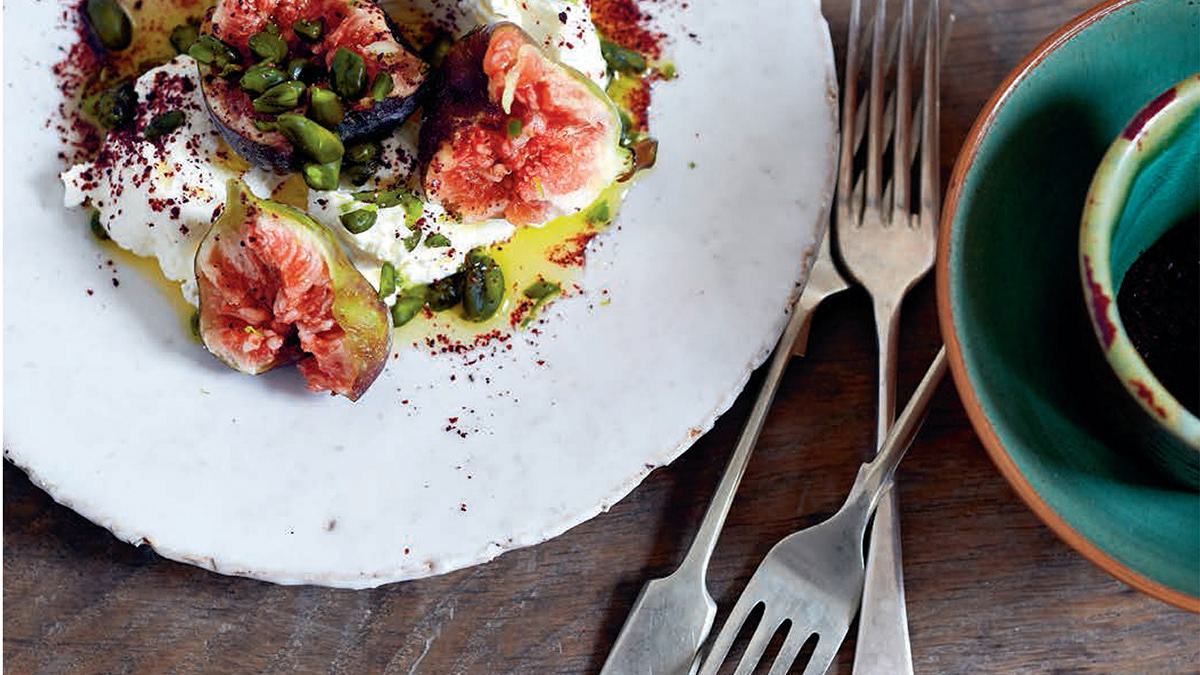PHOTO: Christopher Lewis/For Postmedia News, left, and Phaidon, right; Chef Ferran Adrià at the Shangri-La Hotel in Toronto, left, and 2005 - Snacks: 1117 Pumpkin oil sweet from elBulli 2005–2011, Ferran Adrià, Juli Soler, Albert Adrià
Laura Brehaut/Postmedia News
Originally published on March 18, 2014; canada.com
Originally published on March 18, 2014; canada.com
Restaurants typically open and close; not so in the case of the wildly influential elBulli. The culinary mecca in Catalonia, Spain served its last guests on July 30, 2011 and started the transition from restaurant to foundation. Headed by celebrated Spanish chef Ferran Adrià, the foundation will eventually encompass a culinary/creative think tank and research facility, online resource elBulli DNA/ Bullipedia, and a museum/workshop elBulli 1846.
Adrià recently toured North America in support of the seven-volume elBulli 2005-2011 (Phaidon, 2014). The first six volumes comprise the complete catalogue of the final years of the restaurant – described as “its most fertile and prolific period.” Every single dish that was served at elBulli from 2005 to 2011 is included, accompanied by photographs, recipes, finishing and presentation instructions, cutlery requirements and details on how to eat each dish. Colour-coded by season, the recipes follow the elBulli coursing sequence: cocktails, snacks, tapas, pre-desserts, desserts and the signature morphings.
As Adrià explains in a Toronto interview (translated by Sofia Perez), “The catalogue is the umbilical cord [between restaurant and foundation]. It’s 10,000 pages if we add them all up. It has taken us 14 years to put together these books; 2000 until now. It’s been a tool that allows us to [undertake] this whole process. It would be unthinkable to do it without these books.” The seventh volume, entitled Evolutionary Analysis, offers an in-depth look at the creative process and growth of elBulli during the restaurant’s last six seasons, covering organization, philosophy, products, technology, elaborations, and style and characteristics.
Created in 1998, elBullitaller, or the workshop, was integral to the restaurant’s creative output; 100 new dishes were developed there each year. The workshop archives – meticulously kept – enabled authors Adrià, Juli Soler and Albert Adrià to take an unprecedented look at elBulli’s approach in Evolutionary Analysis. Adrià is recognized internationally for his indelible mark on modern gastronomy, with the emphasis often placed on innovations such as spherification, foams and deconstruction, all of which he pioneered.
Of the emphasis that has been placed on his revolutionary use of technology, Adrià says with a laugh, “People say that the food at elBulli was very technological; people were completely wrong because they didn’t even know what technology was.” He explains that tools such as the siphon (used to make culinary foams) and sous vide improve the process but stresses that humanity has always used tools in this way, regardless of field. “You can decide whether to use it or not but this is less important than what people opine,” he says, adding that when looking at the history of elBulli, the use of technology and the emotional response they strove for were considered to be two different endeavours.
When it comes to describing the cuisine of elBulli, molecular cuisine is the most commonly used term, although there are others. “There’s been confusion here: modernist, molecular, vanguard, techno-emotional…,” Adrià says. “For me, it’s logical to say techno-emotional because the person who created this name, [Pau Arenós], is the person who was with us in Spain when we were creating this type of food. The logical thing is to use what someone from there came up with. We’ll see what happens in 10 years though. If we continue this way, then we could say that it is a type of cuisine that had many different names,” he laughs.
In Evolutionary Analysis, the authors describe the sixth sense, or emotional reaction, as one of the key aspects of elBulli’s cuisine; “the intellectual, non-culinary element.” When designing dishes, Adrià explains that it wasn’t always easy to anticipate emotional reactions due to the cultural component. “If I deconstruct a tortilla de patatas [Spanish omelette] and if we have a Canadian gentleman come, and he doesn’t know the original recipe, there’s no provocation there,” he says. “But for a Spaniard yes because it’s something that they know. If I served rabbit brains, I knew it would be provocative. We wanted you to reflect on what was being served.”
He continues, offering the example of a preparation consisting of water and hazelnut oil that they experimented with during the winter of 2008-09. “We’d put a plum tart next to it; people would say, ‘Water with oil?’ and we knew that it was a shock to people. We wanted to make people reflect on the magic of the texture of oil, and that you never notice it when you eat it in a sauce; you don’t really appreciate the texture. But if you put it on your lips and you feel it, it’s magical and you’re eating oil; people don’t normally do that. We knew more or less when we wanted to provoke and when we didn’t. Sometimes we didn’t want to provoke; we just wanted to move people, or [evoke] a memory of the past.”
Adrià expresses the opinion that the Evolutionary Analysis is the most important volume in the set. “It explains the things that are hard to see. That’s what we want people to reflect on. Nobody really speaks about, if I haven’t explained it to them, the importance of Japan from 2003 to 2011 at elBulli – especially from 2005 to 2011. No one talks about that. Molecular cooking is what they talk about or spherification. That’s the problem with elBulli; every year we changed. It was chaos,” he adds with a laugh.
On their first trip to Japan, in 2002, the elBulli team discovered obulato (in addition to a host of other Japanese products) – a fine, edible sheet, which is used to encase medicine. In 2004, they used obulato to make the dish ‘Transparent empanadilla with redcurrant and eucalyptus,’ and then as a new type of pasta in 2009’s ‘Vanishing ravioli’ (to name just two applications). Playing on the properties of obulato – it vanishes when moistened – diners were instructed to dip the ravioli, using their fingers, into a green pine cone infusion. The optimum dip was three seconds, and the ravioli had to be eaten immediately after dipping. A second too long and the wrapper would disappear before their eyes, leaving the filling behind.
The connection with Japan offered many influences by way of unique products and techniques, but that wasn’t all. Following the visit in 2002, the authors write in the Evolutionary Analysis, “It could be said that the spirit of Japan took hold of us, and that if we were to this point intimately Catalan or Spanish, we were now also a little Japanese. The soul of Japan was entering elBulli.”
“For me, Japan was soul more than the products,” Adrià says. “The products were important and allowed you to do things you hadn’t done, or new techniques, or new tools, or new elaborations but the important thing was the soul. I’m very pragmatic as you can see, and this part is not at all pragmatic from Japan; very emotional, moving, we loved it; it was fantastic. It was a balance between pragmatism and this part.”
It was this “poetic sentiment” inspired by Japan, as well as a return to the regional cuisine of the Mediterranean, that the authors see as defining elBulli in the final years. However, it was the technique-concept search – “in which techniques and concepts are the driving force for creativity” – that resulted in the most imitated aspects of elBulli’s style (spherification, foams, hot jellies etc.). When asked about his preferred techniques or products, Adrià says with a laugh, “There are a lot. That’s what was wonderful about the magic of elBulli; the amazing amount of techniques and new products that we created; elaborations. Obulato – it’s magic. Creativity is not always about doing complex things; it’s to see things that others don’t see.”
ELBULLI AT A GLANCE
Foundation website: elbulli.com
Meaning: ‘Bulli’ is a colloquial term for French bulldog
Stats: During elBulli’s last six seasons it received more than two million reservation requests each year, and served dinner to just 8,000
Innovations (selected):
Culinary foams – created in 1994 at elBulli using siphons to combine various ingredients with air. Dishes include: 1188 Mango-puzzle with frozen elderflower wedge and coconut foam; 1155 Stewed walnuts with daisy buds, beurre noisette air-foam and mint aroma
Freeze-drying – commercially produced freeze-dried products were used at elBulli prior to 2004. In 2005, they took the process in-house. Dishes include: 1093 White sangria in suspension; 1134 Carrot-LYO foam with hazelnut foam-air and Córdoba spices
Spherification – the process turns liquefied food into spheres, resembling caviar, with a liquid centre. Dishes include: 1262 In-situ spherification of a cucumber soup; 1278 Bread soup with pepper dulse and spherical-I mini-yolks
Deconstruction – in elBulli 2005-2011, the authors write: “elBulli cuisine, particularly in the final years, was not deconstructed cuisine.” However, Adrià is credited with its emergence in the early 90s. Deconstructed dishes contain the original flavours of a referenced dish, although the form and physical presentation are quite different. Dishes include: 1484 Carbonara; 1466 Cherries in kirsch
Freeze-drying – commercially produced freeze-dried products were used at elBulli prior to 2004. In 2005, they took the process in-house. Dishes include: 1093 White sangria in suspension; 1134 Carrot-LYO foam with hazelnut foam-air and Córdoba spices
Spherification – the process turns liquefied food into spheres, resembling caviar, with a liquid centre. Dishes include: 1262 In-situ spherification of a cucumber soup; 1278 Bread soup with pepper dulse and spherical-I mini-yolks
Deconstruction – in elBulli 2005-2011, the authors write: “elBulli cuisine, particularly in the final years, was not deconstructed cuisine.” However, Adrià is credited with its emergence in the early 90s. Deconstructed dishes contain the original flavours of a referenced dish, although the form and physical presentation are quite different. Dishes include: 1484 Carbonara; 1466 Cherries in kirsch
Alumni (selected):
Notable dates:
1961 – Dr. Hans and Marketta Schilling open elBulli, first as a mini golf course and then a beach bar
1975 – elBulli was awarded its first Michelin star for Jean-Louis Neichel’s nouvelle cuisine
1981 – Juli Soler joins the staff, taking over the management of elBulli
1984 – Ferran Adrià joins the staff as chef de partie and becomes joint chef de cuisine (head chef) the same year
1985 – Albert Adrià joins the staff as an apprentice (Albert will eventually become creative director – he left elBulli in 2008)
1987 – Ferran Adrià becomes sole chef de cuisine; elBulli closes for the winter for the first time, which becomes an annual tradition
1990 – Second Michelin star is awarded, for the second time
1997 – Third Michelin star is awarded
1998 – Creation of elBullitaller (the workshop)
2002 – Elimination of the à la carte menu (tasting menu only); named ‘Best restaurant in the world’ by The Restaurant Magazine
2006-2009 – Named ‘Best restaurant in the world’ by The Restaurant Magazine each year, for a record of five times total
2010 – Ferran Adrià named ‘Best chef of the decade’ by The Restaurant Magazine
2011 – elBullirestaurant closes on July 30; transition to elBullifoundation begins
1975 – elBulli was awarded its first Michelin star for Jean-Louis Neichel’s nouvelle cuisine
1981 – Juli Soler joins the staff, taking over the management of elBulli
1984 – Ferran Adrià joins the staff as chef de partie and becomes joint chef de cuisine (head chef) the same year
1985 – Albert Adrià joins the staff as an apprentice (Albert will eventually become creative director – he left elBulli in 2008)
1987 – Ferran Adrià becomes sole chef de cuisine; elBulli closes for the winter for the first time, which becomes an annual tradition
1990 – Second Michelin star is awarded, for the second time
1997 – Third Michelin star is awarded
1998 – Creation of elBullitaller (the workshop)
2002 – Elimination of the à la carte menu (tasting menu only); named ‘Best restaurant in the world’ by The Restaurant Magazine
2006-2009 – Named ‘Best restaurant in the world’ by The Restaurant Magazine each year, for a record of five times total
2010 – Ferran Adrià named ‘Best chef of the decade’ by The Restaurant Magazine
2011 – elBullirestaurant closes on July 30; transition to elBullifoundation begins
Published works (selected):
elBulli 2005-2011 by Ferran Adrià, Juli Soler and Albert Adrià (Phaidon Press, 2014)
A Day at elBulli by Ferran Adrià (Phaidon Press, 2012)
The Family Meal: Home Cooking with Ferran Adrià by Ferran Adrià (Phaidon Press, 2011)
Modern Gastronomy: A to Z by Ferran Adrià (CRC Press, 2009)
elBulli 2003-2004 by Ferran Adrià, Juli Soler and Albert Adrià (Ecco, 2006)
elBulli 1994-1997 by Ferran Adrià, Juli Soler and Albert Adrià (Ecco/HarperCollins Canada, 2006)
elBulli: 1998-2002 by Ferran Adrià, Juli Soler and Albert Adrià (Ecco, 2005)
elBulli. El Sabor del Mediterráneo by Ferran Adrià (1993)
A Day at elBulli by Ferran Adrià (Phaidon Press, 2012)
The Family Meal: Home Cooking with Ferran Adrià by Ferran Adrià (Phaidon Press, 2011)
Modern Gastronomy: A to Z by Ferran Adrià (CRC Press, 2009)
elBulli 2003-2004 by Ferran Adrià, Juli Soler and Albert Adrià (Ecco, 2006)
elBulli 1994-1997 by Ferran Adrià, Juli Soler and Albert Adrià (Ecco/HarperCollins Canada, 2006)
elBulli: 1998-2002 by Ferran Adrià, Juli Soler and Albert Adrià (Ecco, 2005)
elBulli. El Sabor del Mediterráneo by Ferran Adrià (1993)
